Related Research Articles
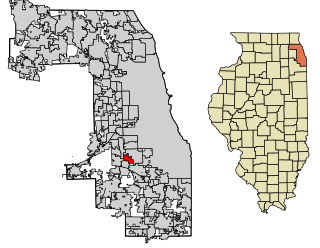
Chicago Ridge is a village in Cook County, Illinois, United States. Per the 2020 census, the population was 14,433.
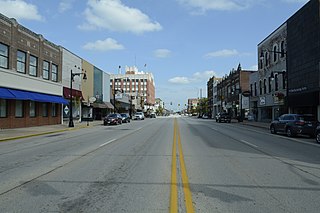
Galesburg is a city in Knox County, Illinois, United States. The city is 45 miles (72 km) northwest of Peoria. At the 2010 census, its population was 32,195. It is the county seat of Knox County and the principal city of the Galesburg Micropolitan Statistical Area, which includes all of Knox and Warren counties.

The City of New Orleans is a long-distance passenger train operated by Amtrak on an overnight schedule between Chicago and New Orleans. The train is a successor to the Illinois Central Railroad's Panama Limited.

The Chicago, Burlington and Quincy Railroad was a railroad that operated in the Midwestern United States. Commonly referred to as the Burlington Route, the Burlington, or as the Q, it operated extensive trackage in the states of Colorado, Illinois, Iowa, Missouri, Nebraska, Wisconsin, Wyoming, and also in Texas through subsidiaries Colorado and Southern Railway, Fort Worth and Denver Railway, and Burlington-Rock Island Railroad. Its primary connections included Chicago, Minneapolis–Saint Paul, St. Louis, Kansas City, and Denver. Because of this extensive trackage in the midwest and mountain states, the railroad used the advertising slogans "Everywhere West", "Way of the Zephyrs", and "The Way West".

The Illinois Central Railroad, sometimes called the Main Line of Mid-America, was a railroad in the Central United States, with its primary routes connecting Chicago, Illinois, with New Orleans, Louisiana, and Mobile, Alabama, and thus, the Great Lakes to the Gulf of Mexico. A line also connected Chicago west to Sioux City, Iowa (1870). There was a significant branch to Omaha, Nebraska (1899), west of Fort Dodge, Iowa, and another branch reaching Sioux Falls, South Dakota (1877), starting from Cherokee, Iowa. The IC also serviced Miami, Florida, on trackage owned by other railroads

The Dakota, Minnesota and Eastern Railroad is a wholly owned U.S. subsidiary of the Canadian Pacific Kansas City. Before its purchase, it was the largest Class II railroad in the United States, operating across South Dakota and southern Minnesota in the Northern Plains of the United States. Portions of the railroad also extended into Wyoming, Nebraska, Iowa, and Illinois. It interchanged with all seven U.S. Class I railroads.

John Work Garrett, was an American merchant turned banker who became president of the Baltimore and Ohio Railroad (B&O) in 1858 and led the railroad for nearly three decades. The B&O became one of the most important American railroads by the time Garrett died, and Garret would also become a noted philanthropist. He provided crucial support for the Union cause during the Civil War, expanded the railroad to reach Chicago, Illinois, and competed with the Pennsylvania Railroad for access to New York City.
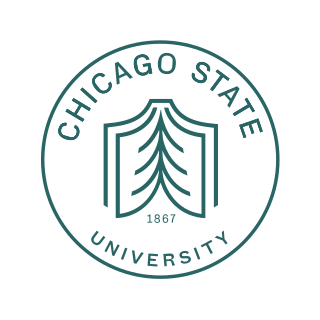
Chicago State University (CSU) is a predominantly black public university in Chicago, Illinois. Founded in 1867 as the Cook County Normal School, it was an innovative teachers college. Eventually the Chicago Public Schools assumed control of the school from the county and it became Chicago Teachers College (CTC). Northeastern Illinois University began as a branch campus of CTC in 1949. In 1951, the State of Illinois began funding the college, and assumed control in 1965, transforming it into a comprehensive state college. In 1967, it became Chicago State University. CSU is a member of the Thurgood Marshall College Fund and accredited by the Higher Learning Commission.
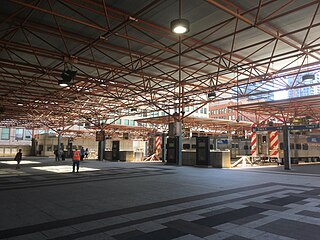
LaSalle Street Station is a commuter rail terminal at 414 South LaSalle Street in downtown Chicago. First used as a rail terminal in 1852, it was a major intercity rail terminal for the New York Central Railroad until 1968, and for the Chicago, Rock Island and Pacific Railroad until 1978, but now serves only Metra's Rock Island District. The present structure became the fifth station on the site when its predecessor was demolished in 1981 and replaced by the new station and the One Financial Place tower for the Chicago Stock Exchange. The Chicago Board of Trade Building, Willis Tower and Harold Washington Library are nearby.
The Chicago Railroad Fair was an event organized to celebrate and commemorate 100 years of railroad history west of Chicago, Illinois. It was held in Chicago in 1948 and 1949 along the shore of Lake Michigan and is often referred to as "the last great railroad fair" with 39 railroad companies participating. The board of directors for the show was a veritable "Who's Who" of railroad company executives.
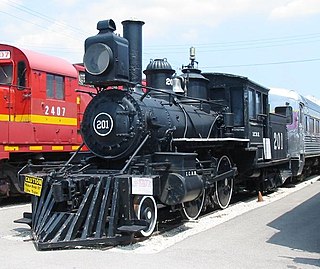
Illinois Central 201 is a steam locomotive, originally owned and operated by Illinois Central Railroad. The engine hauled thousands of passengers to the 1893 Columbian Exposition in Chicago, at which time, Casey Jones was one of its engineers. In 1949, the locomotive was operated at the Chicago Railroad Fair as part of the "Wheels A-Rolling" pageant. It is now on static display at Illinois Railway Museum in Union, Illinois.

Ewing Hunter Harrison was a railway executive who served as the CEO of Illinois Central Railroad (IC), Canadian National Railway (CN), Canadian Pacific Railway (CP), and CSX Corporation. He died on December 16, 2017, two days after taking medical leave from CSX. He is known for introducing precision scheduled railroading to the companies he ran.

Timothy Beach Blackstone was an American railroad executive, businessman, philanthropist, and politician. He is descended from William Blaxton, an early settler of New England. He worked in the railroad industry for most of his life after dropping out of school. At the time of his death, his estate was worth US$6 million.

Eber Brock Ward was an American industrialist, iron and steel manufacturer, and shipbuilder.

The Brotherhood of Railroad Trainmen (BRT) was a labor organization for railroad employees founded in 1883. Originally called the Brotherhood of Railroad Brakemen, its purpose was to negotiate contracts with railroad management and to provide insurance for members.
Edward L. Moyers, Jr. was an American railroad executive of the 20th century. He served as president and CEO of several railroads including MidSouth Rail, Illinois Central Railroad and Southern Pacific Railroad. In 1995, Railway Age magazine named Moyers its "Railroader of the Year".
Major Lenox Riley Lohr (1891-1968) was a contributor to the development of Chicago's lake front; organizer of exhibitions including the Century of Progress and Chicago Railroad Fairs; longtime president of Chicago's Museum of Science and Industry and promoter of civic and charitable causes.

Elections were held in Illinois on Tuesday, November 6, 1956.
References
- ↑ "Trustees, University of Illinois Board of Trustees" (PDF). University of Illinois. Retrieved 1 April 2020.
- ↑ Chicago Railroad Fair Official Guide Book. 1949..